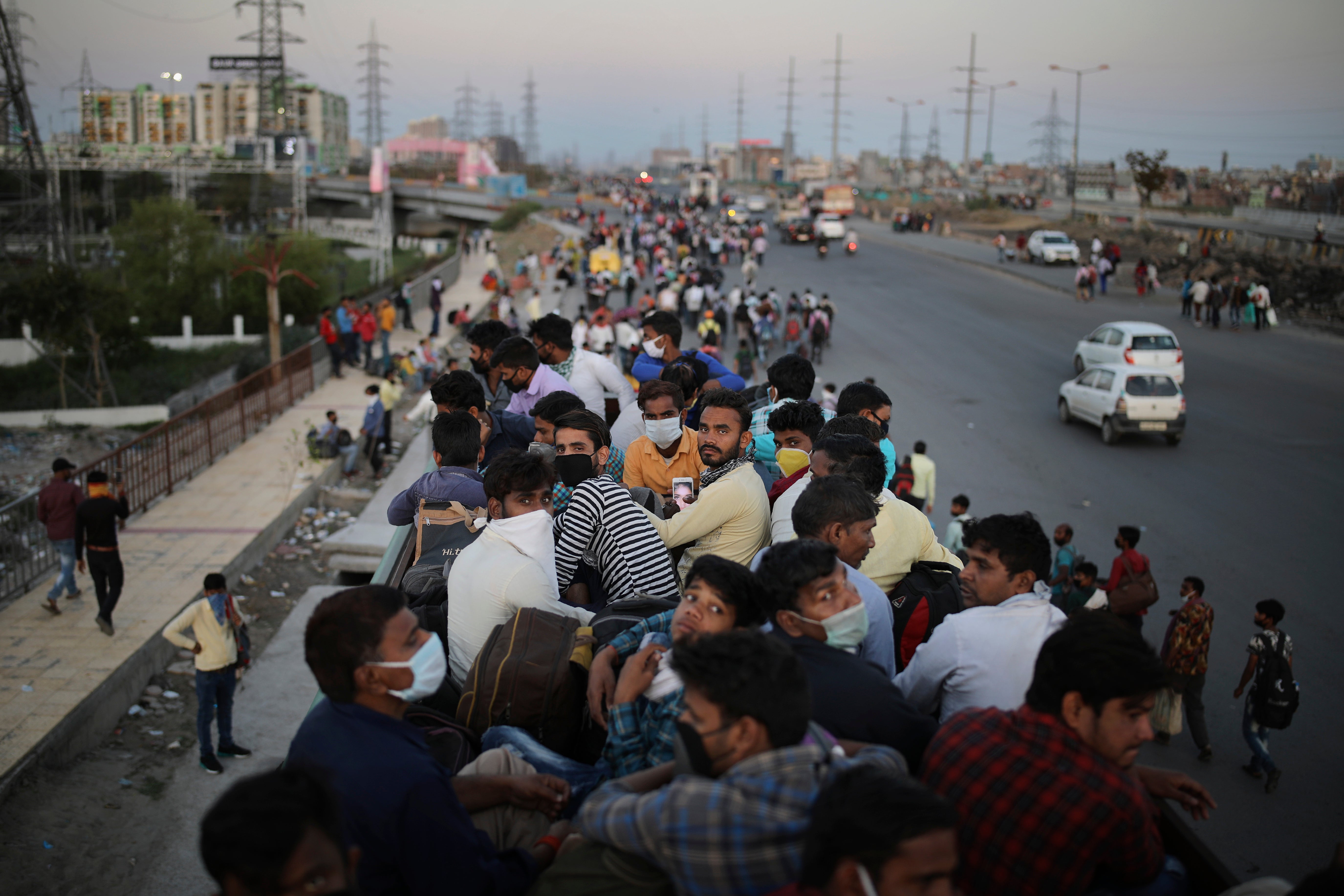A pandemic atlas: India struggles to save lives, economy
A nation of 1.3 billion people, India is likely to emerge as the country with the world’s highest coronavirus tally

Your support helps us to tell the story
From reproductive rights to climate change to Big Tech, The Independent is on the ground when the story is developing. Whether it's investigating the financials of Elon Musk's pro-Trump PAC or producing our latest documentary, 'The A Word', which shines a light on the American women fighting for reproductive rights, we know how important it is to parse out the facts from the messaging.
At such a critical moment in US history, we need reporters on the ground. Your donation allows us to keep sending journalists to speak to both sides of the story.
The Independent is trusted by Americans across the entire political spectrum. And unlike many other quality news outlets, we choose not to lock Americans out of our reporting and analysis with paywalls. We believe quality journalism should be available to everyone, paid for by those who can afford it.
Your support makes all the difference.India is caught between two calamities — a relentless pandemic that is ravaging the country and a hollowed-out economy that is without precedent.
Restaurants, cinemas and shopping districts are taking teetering steps on the country’s jagged path to recovery, but millions remain jobless. Markets are being thronged with crowds, but many shoppers are not wearing masks. The unemployed are slowly returning to cities to find work, even as hospitals still brim with COVID-19 patients.
That India, the world’s second-most populated country, would have one of world's highest worst caseloads was always a probability. That’s why India’s initial response had to be big — perhaps even unmatched.
The government’s initial communication was confused and marred by misinformation. Worse, India’s ruling party leaders and its freewheeling news channels, which have long favored Prime Minister Narendra Modi’s Hindu nationalistic policies, found a perfect villain: They blamed Muslims for spreading the virus, leading to an onslaught of online condemnation, physical violence and discrimination.
When Modi ordered the lockdown of the country's entire population of more than 1.3 billion people on March 24 with just a four hours' notice, nerves were frayed.
As the clock struck midnight, the 21-day lockdown came into force, eventually stretching to 68 days. Suddenly, a sprawling landscape, where countless millions of destitute citizens live in tightly packed urban areas, came to a grinding halt.
The lockdown, among the world’s strictest, was a seismic cultural shift in a nation that boasts of its community bond. Everyone hunkered down.
That bought time for the Indian government, which had initially squandered weeks. It marshaled more resources to stop the virus. Trains, hotels, banquet halls were converted into makeshift medical facilities. Garment industries started stitching masks and protective personal equipment. Chemical factories made disinfectants and hand sanitizers.
But Modi’s abrupt lockdown caught India’s enormous migrant worker population off guard. Tens of millions of them were stranded in big cities without jobs, food and shelter.
Fearing starvation, whole families packed their pots, pans and blankets into rucksacks and, balancing children on their shoulders, started walking home along highways. It was one of the biggest migrations in India’s modern history. More than a hundred people died of hunger, heat strokes and accidents.
The migration also dragged coronavirus into every corner of India, particularly the vast hinterlands.
But the lockdown slowed the spread of the virus — at least at first. Even as hospitals were overwhelmed in the U.S. and Europe, India's cases rose at a slow pace.
In May and June, however, those cases started to gradually increase, with megacity Mumbai and the capital New Delhi faring the worst. Social inequalities began to come to the fore. And by July and August, when the country had mostly opened up, India’s virus outbreak was the world’s fastest-growing and infections fast rocketed through its dense slums and urban pockets.
The number of detected cases peaked in September to nearly 100,000 a day and the country's weakly funded healthcare system struggled to keep up.
New infections have fallen nationwide since then. But as air pollution levels rise and winter digs in after a festive season that spawned fears of a viral resurgence, the latest surge is cresting in New Delhi, where critical care wards are stretched to their limits.
By mid-December, India had reported 27 cases per 100,000 population.
The renewed crisis has underscored what doctors have been warning for weeks: It might not be over yet.
One silver lining: India is home to some of the world’s biggest vaccine-makers and there are five vaccine candidates under different phases of trial in India, though challenges remain. The state-run cold chain facilities, used to keep vaccines consistently refrigerated, will not be adequate for the enormous challenge of rolling out a COVID-19 vaccine.
Subscribe to Independent Premium to bookmark this article
Want to bookmark your favourite articles and stories to read or reference later? Start your Independent Premium subscription today.